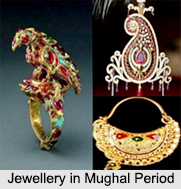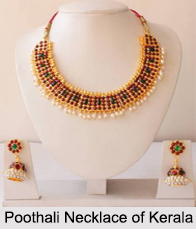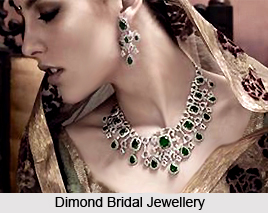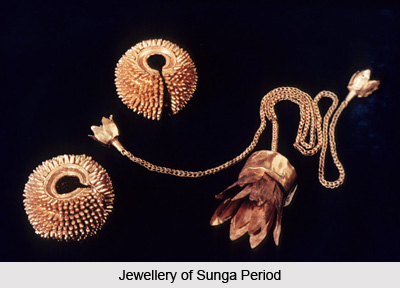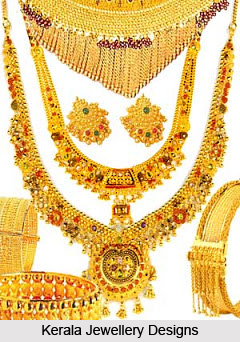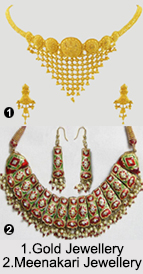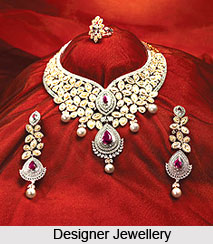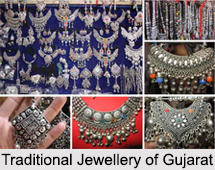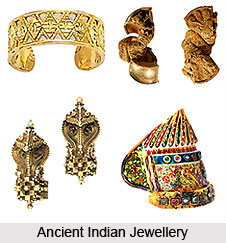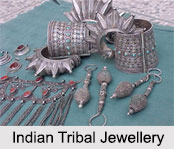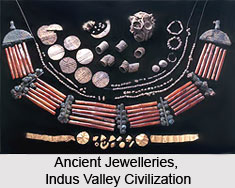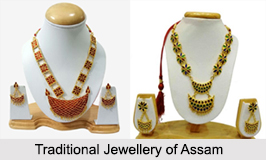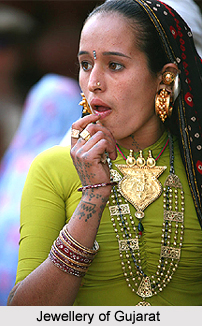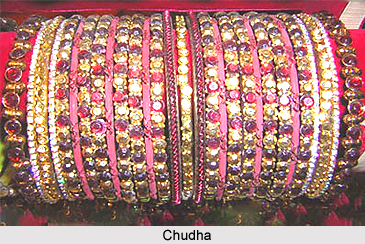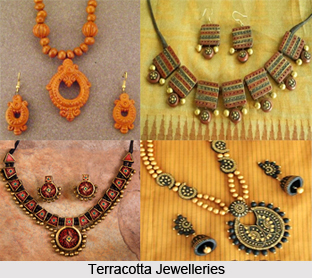 Gold embellished steel jewellery is an area in which India has long done well. The so-called `Oriental` arras and armour are legendary for Damascening, a term used to refer to both the inlay and the overlay of steel with precious-metal decoration (usually gold). In such embellishment, as with other aspects of arts and crafts in general and with other disciplines connected with iron and steel in particular, India excelled.
Gold embellished steel jewellery is an area in which India has long done well. The so-called `Oriental` arras and armour are legendary for Damascening, a term used to refer to both the inlay and the overlay of steel with precious-metal decoration (usually gold). In such embellishment, as with other aspects of arts and crafts in general and with other disciplines connected with iron and steel in particular, India excelled.
The inlaying and overlaying of iron and steel articles has a long history in Asia and Egypt, as well as in Europe. The Mughal period manifestations of such decoration continue a tradition which had its beginnings in Iran during the medieval period. As in the case of the inlaying of hardstones, this was probably inspired by, or at least received fresh impetus from, the rise and florescence in eastern Iran, especially Herat, in the 12th and early 13th centuries of a very sophisticated, significant and celebrated school of the inlaying of copper-alloy vessels with silver and copper. Evidence that such inlay of weapons reached a high level of excellence in this period is supplied by a series of knives and daggers found.
The very finest work of the Mughal era, like the medieval examples just mentioned, is executed in inlay, in which grooves forming the lines of the design are cut in such a way as to leave gripping configurations in the cavities, into which the precious metal is then hammered and becomes kicked into place. It appears that this technique was practised with special finessed and was particularly prevalent in the Deccan.
Apart from inlay work, overlay work was also a remarkably well worked out art. Some of the most beautiful pieces of this period, such as daggers, have their blades decorated not in inlay but in overlay. In this technique, the overall surface to be decorated is first hatched with a sharp-bladed chisel and the design, in the form of precious-metal wire, is then hammered, with remarkable precision, on to the hatching. In general, such decoration, in which the precious metal (almost invariably gold) stands out in contrast against the dark iron or steel surface (which is blued), is very effective. It is especially so when designed and executed by such gifted masters as those who practised the craft during the Mughal period.
In Mughal India during the reign of the emperor Akbar (and, no doubt, also later and in non-Mughal territory), the inlayers of steel were ranked equal to the inlayers of hardstones, being designated by the same term `Zar Nisha` and receiving the same level of pay. They are among the highest mentioned for precious-material craftsmen by Akbar`s minister and historian, Abul-Fazl.
